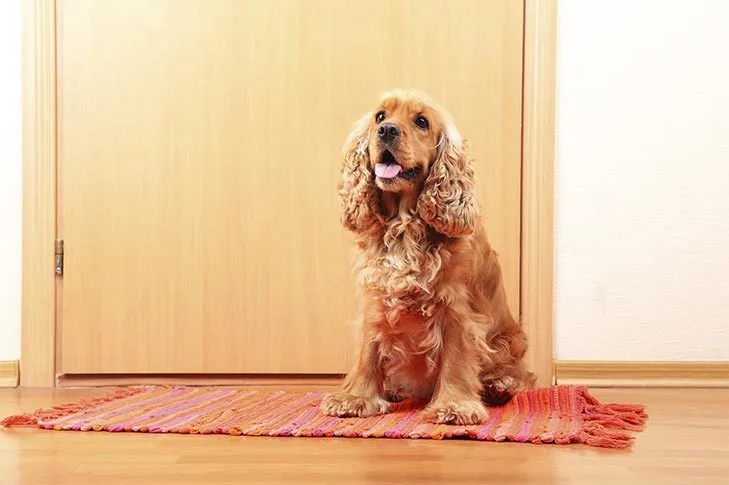Potty training a puppy is a cornerstone of responsible pet ownership, and teaching your puppy to ring a bell to go potty is an incredibly effective method to foster clear communication and minimize indoor accidents. This system empowers your young dog to express their needs independently, reducing frustration for both of you and strengthening your bond. By proactively learning how to implement bell training, you’re setting your puppy up for success and cultivating a more harmonious home environment.
Choosing Your Puppy’s Communication Tool
When it comes to enabling your puppy to communicate their need to go outside, you have a few excellent options. The most straightforward and budget-friendly choice involves using bells hanging from a doorknob or positioned conveniently near the door. For added convenience, you can integrate receivers throughout your home, ensuring you hear the doorbell when your puppy nudges it, no matter where you are. A more advanced option is using talking buttons – these recordable buttons allow you to teach your dog to talk by associating specific words with actions. This method gained widespread recognition through Christina Hunger’s “Hunger4Words” social media accounts and her book, “How Stella Learned To Talk.” Regardless of your choice, the core principle remains consistent: establishing a clear signal for your puppy to indicate their potty needs. For a more direct approach to this training, consider resources on how to train puppy to ring bell to go potty.
 An adorable English Cocker Spaniel puppy patiently waiting by the door, ready for outdoor potty breaks with its training bell.
An adorable English Cocker Spaniel puppy patiently waiting by the door, ready for outdoor potty breaks with its training bell.
Step-by-Step Guide to Bell Potty Training
Successfully teaching your puppy to ring a bell involves a simple, consistent approach, leveraging their natural observation skills and your positive reinforcement. While it’s easy to lure a puppy with treats or a “touch” cue, our goal is for them to independently communicate, making demonstration the most effective strategy. Through consistent modeling, your puppy will soon connect the bell’s sound with an outdoor potty break, mirroring your actions.
Step 1: Introduction and Positive Association
Begin by introducing the bell or button to your puppy. Allow them to sniff, inspect, and explore it freely. Reward any interest or engagement with the bell using praise and a small treat. This initial positive interaction ensures your puppy doesn’t perceive the bell as something to be feared.
Step 2: Consistent Demonstration and Placement
Place the chosen bell or button near the door you most frequently use for potty breaks. Each and every time you take your puppy out, gently press the button or ring the bell yourself. The aim is for your puppy to repeatedly associate the sound of the bell with going outside. Consistency is absolutely crucial here; make sure everyone in the household uses the bell before every single outdoor trip. This repetitive action is key to effectively training a puppy to ring a bell to go outside.
Step 3: Reinforcement and Independent Action
Puppies are keen observers. After consistently watching you ring the bell before heading out, your puppy will begin to understand its significance. Continue this routine until your puppy starts to ring the bell on their own. The moment your puppy rings the bell independently, offer enthusiastic praise and immediately take them outside for their potty break, even if it’s just for a minute. This immediate reward reinforces the desired behavior. Remember that positive reinforcement is effective for many different behaviors; there are many things you can train your dog to do with patience and consistency.
 A French Bulldog puppy lying by the door with a leash, demonstrating readiness for potty time after learning bell training.
A French Bulldog puppy lying by the door with a leash, demonstrating readiness for potty time after learning bell training.
Building a Stronger Bond Through Communication
Most puppies quickly grasp the concept of ringing a bell or pushing a button to signal their need to go outside. Establishing this shared language with your puppy significantly reduces miscommunication and frustration within the home, leading to a stronger bond. An added benefit is that it allows your puppy to clearly communicate their needs with other family members or guests who might not be as familiar with their subtle potty signals. Moreover, if you ever have a pet sitter staying at your home, the bell system ensures your puppy can convey their fundamental need to their temporary caregiver, making your absence less stressful for them.
In conclusion, teaching your puppy to ring a bell for potty breaks is an investment in effective communication and a harmonious household. With consistent effort, positive reinforcement, and patience, you’ll be amazed at how quickly your puppy masters this valuable skill, leading to fewer accidents and a deeper connection between you and your furry friend.
